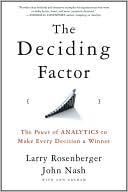Category Books
- Fiction Books & Literature
- Graphic Novels
- Horror
- Mystery & Crime
- Poetry
- Romance Books
- Science Fiction & Fantasy
- Thrillers
- Westerns
- Ages 0-2
- Ages 3-5
- Ages 6-8
- Ages 9-12
- Teens
- Children's Books
- African Americans
- Antiques & Collectibles
- Art, Architecture & Photography
- Bibles & Bible Studies
- Biography
- Business Books
- Christianity
- Computer Books & Technology Books
- Cookbooks, Food & Wine
- Crafts & Hobbies Books
- Education & Teaching
- Engineering
- Entertainment
- Foreign Languages
- Game Books
- Gay & Lesbian
- Health Books, Diet & Fitness Books
- History
- Home & Garden
- Humor Books
- Judaism & Judaica
- Law
- Medical Books
- New Age & Spirituality
- Nonfiction
- Parenting & Family
- Pets
- Philosophy
- Political Books & Current Events Books
- Psychology & Psychotherapy
- Reference
- Religion Books
- Science & Nature
- Self Improvement
- Sex & Relationships
- Social Sciences
- Sports & Adventure
- Study Guides & Test Prep
- Travel
- True Crime
- Weddings
- Women's Studies
The Deciding Factor: The Power of Analytics to Make Every Decision a Winner »

Authors: Larry E. Rosenberger, John Nash, Ann Graham
ISBN-13: 9780470398197, ISBN-10: 0470398191
Format: Hardcover
Publisher: Wiley, John & Sons, Incorporated
Date Published: March 2009
Edition: (Non-applicable)
Author Biography: Larry E. Rosenberger
Larry Rosenberger is widely recognized as an innovator in decision technology, particularly in consumer lending. During his tenure as CEO of Fair Isaac Corporation, revenues soared eight-fold over a nine-year time frame. He was named Fair Isaac's first analytic research fellow in 2007, following more than 33 years of service to the company. In this capacity, he continues to pursue research projects that advance Fair Isaac's analytic science.
John Nash is Fair Isaac's vice-president of corporate strategy, leading strategy development across the company's product portfolio. Nash has worked with Fortune 500 companies in financial services, retail, consumer packaged goods, and high tech.
Ann Graham is a contributor to and former deputy editor of strategy+business magazine, and has been a writer and editor for The Economist Group; Gartner, Inc.; Booz & Co.; and Knowledge@Wharton.
Book Synopsis
The Deciding Factor
In today's high-tech world, all companies are striving to create business value from digital data, but the real value in data comes from how it is used to make decisions. At the end of the day, what drives the results your company achieves is the millions of decisions made every day that are influenced by customer interactions and transactions.
In this groundbreaking book, Larry Rosenberger and John Nash draw on over fifty years of experience in helping companies automate, improve, and connect decisions. Using analytic techniques first pioneered by Fair Isaac Corporation, the authors clearly show how today's forward-thinking executives and managers are using analytic insights to ensure their decisions keep up with information complexity and the pace of change—especially changes in consumer behavior and attitudes, in regulations, and in competitive actions and reactions. The authors explain how making better decisions through a combination of data, mathematics, and software can lead to a more customer-centric, cost-competitive, and creative organization.??
Highly accessible, The Deciding Factor helps demystify the math and information technology behind decision management for the business manager who may not be a mathematics or computer science wizard. As practical as it is approachable, the book answers such questions as: How does a multinational consumer packaged-goods company build brand loyalty one person at a time? How does a consumer credit-card company process millions of transactions every second and keep fraud under control? How can a big-box retailer increase per-customer profitability?
Rosenberger and Nash offer a much-needed resource for decision makers from the boardroom to the front line, a resource that provides guidance to create and unlock new sources of value from an organization's decisions.
Table of Contents
Introduction.
1. From Intuition to Algorithms: A Brief History of Using Analytics to Make Better Decisions.
2. How Analytics Makes Customer Relationships More Valuable: The Netflix, Best Buy, Tesco, and Harrah’s Experience.
3. Co-Creation and Decision Management: How Consumers and Companies Share Data to Create Value.
4. The Disciplines of Decision Leaders: The Math, Mind-Set, and Technology for Managing Decisions.
5. The New Knowledge Workers: Defining the Talent Mix for Success with Analytics.
6. Demystifying Decision Management: A Primer on Various Analytic Tools and Techniques.
7. The Future of Decision Management: Using Differentiated Decisions to Gain Competitive Advantage.
Notes.
Appendix A: Fair Isaac’s Decision Management Project Methodology.
Appendix B: Glossary.
Acknowledgments.
The Authors.
Index.
Subjects

